
133 Molesworth Street
PO Box 5013
15 February 2023
Wellington 6140
New Zealand
T+64 4 496 2000
Tracy Livingston
By email: [FYI request #21576 email]
Ref:
H2023019554
Tēnā koe Tracy
Response to your request for official information
Thank you for your request under the Official Information Act 1982 (the Act) to Manatū Hauora
(the Ministry of Health) on 18 January 2023 for information regarding the Therapeutic Products
Bill (the Bill). Please find a response to each part of your request below.
1. With whom has the Ministry of Health engaged regarding writing of the Therapeutic
Products Bill?
The Bil has been through a long period of extensive consultation and development. There was
considerable consultation and engagement on the Natural Health and Supplementary Products
Bill, which lapsed in 2017. This Bil builds on the significant work done then, taking into
consideration previous contentious issues.
In 2018, an exposure draft of the Bil , which did not include natural health products, was
released for public consultation. Al these consultations sessions were open to the public.
Background to the public consultation, including the consultation document and key themes
from submissions, can be found at:
www.health.govt.nz/publication/therapeutic-products-
regulatory-scheme-consultation.
In 2019, there were open forums held for sectors relevant to the Bil , and Māori groups
connected to those sectors were specifically invited to join. This information is outlined in
Document 1 of Appendix 1, which shows the schedule for each forum.
On 30 November 2022, Minister Henare announced a new rongoā workstream alongside the
Bil to assess the interface between rongoā Māori and the Bil . This mahi has included targeted
engagement with key stakeholders, Māori partners, and expert groups. Minister Henare’s press
release announcing the new workstream can be found at this link
https:/ www.beehive.govt.nz/release/new-rongo%C4%81-workstream-announced-alongside-
therapeutic-products-bill.
Manatū Hauora also engaged with a range of stakeholders in 2022 on different aspects of the
Bil including natural health products, rongoā and medical technology. This includes:
- Consultation with the Natural Health Product sector on 1 and 3 November 2022; and
- Consultation about rongoā Māori with a range of stakeholders (including Te Kāhui
Rongoā and Interim Māori Health Authority) on 31 May, 2, 7 and 30 June 2022.
Public consultation on the Bil is ongoing. The Bil is currently with Parliament’s Health Select
Commit ee. The Committee has called for written submissions from the public, and can also
invite individuals to present to the Committee. If you have feedback about the Bil , you can
make a submission by visiti
ng www.parliament.nz/en/pb/bil s-and-laws/bills-proposed-
laws/document/BILL_130084/therapeutic-products-bill. Submissions on the Bil close 11:59pm,
Sunday 5 March 2023.
2. Please include all reports, requests, emails and lobby group engagements that have
facilitated the decision making and writing of this bill including minutes of all meetings of
pharmaceutical companies with Andrew Little that discuss this Bil
Due to the broad scope of this part of your request, the Ministry contacted you pursuant to
section 18B of the Act on 1 February 2023, to ask you to refine this part of request. You were
informed that your request may be refused under section 18(f) of the Act as the information
requested could not be made available without substantial collation or research. It was
suggested that you refine your request to formal correspondence only, from 2021 to present.
On 1 February 2023 you responded that you would like to refine your request to “
Informal and
formal correspondence, including text messages, from 2021 to present”. The use of the word
“informal” has broadened the scope of your request to one that would require substantial
collation and research. For this reason, I am refusing your request pursuant to section 18(f) of
the Act.
However, we have identified some documents that may be relevant to your request. Documents
2 to 6 were identified in scope of this part of your request and are outlined in the table in
Appendix 1 of this letter, with copies enclosed. Where information is withheld under section 9 of
the Act, I have considered the countervailing public interest in releasing information and
consider that it does not outweigh the need to withhold at this time.
In addition, I have considered your revised request for text messages and can advise that no
text messages related to industry or lobby engagements that facilitated the decision making or
writing of the Bil are held by the Ministry.
Finally, for the Hon Andrew Little MP’s publicly released meeting list, please visit the Beehive’s
website at:
www.beehive.govt.nz/search?f%5B0%5D=content_type_facet%3Aministerial_diary&f%5B1%5
D=ministers%3A6473&f%5B2%5D=government_facet%3A6455.
If you would like to clarify your request by asking for specific documents or information, please
do so. This would assist the Ministry in identifying and providing further documentation that may
be relevant to you.
3. Who is the actual author of the bil itself?
There is no single author of the Bil . Legislative drafters at the Parliamentary Counsel Office | Te
Tari Tohutohu Pāremata are responsible for drafting legislation, based on drafting instructions
prepared by the Ministry.
Further information about the legislative process is available at
: https://policy-to-law.pco.govt.nz.
Page 2 of 4

I trust this information fulfils your request. Under section 28(3) of the Act, you have the right to
ask the Ombudsman to review any decisions made under this request. The Ombudsman may
be contacted by email at:
[email address] or by calling 0800 802 602.
Please note that this response, with your personal details removed, may be published on the
Manatū Hauora website at:
www.health.govt.nz/about-ministry/information-releases/responses-
official-information-act-requests.
Nāku noa, nā
John McGrath
Director, Priority Projects
Strategy, Policy and Legislation |
Te Pou Rautaki
Page 3 of 4
Appendix 1: List of documents for release
#
Date
Document details
Decision on release
1
13 February 2019
Email - Consultation schedule for Some information withheld
the draft Therapeutic Products
under section 9(2)(a) of the
Bill
Act, to protect the privacy of
natural persons.
2
1 July 2021
Aide-Mémoire - Meeting with
CEO of Medicines New Zealand
(HR20211531)
3
7 October 2021
Aide-Mémoire - Meeting with
Minister Wood to discuss COVID-
19 technology and supporting
New Zealand innovation
(HR20212199)
4
9 November 2021 Aide-Mémoire - Meeting with
representatives from Johnson &
Johnson on value-based
healthcare
(HR20212450)
8 August 2022
Event briefing and speech for the
5
Medicines New Zealand Annual
Stakeholder Dinner 2022
(HR20221271)
15 November 2022 Aide-Mémoire - Meeting with the
6
Medical Technology Association
of New Zealand
(HR2022016300)
Page 4 of 4

Document 1
Document Profile
Therapeutics Domestic Regulatory Scheme
Status:
Final
Drawer:
2. Stakeholder Engagement and
Date:
13/02/2019
Communications
Title:
Consultation schedule for the
Folder:
2. Stakeholder
draft Therapeutic Products Bill
Engagement\Correspondence\201
Author:
Hannah Adams
9
Document Type:
Email
File Location:
Summary:
Unit:
Ministry of Health
Knowledge Content: Med
System Strategy and Policy
Regulatory Policy\Safety and
Access
Maintainer(s):
Alison Cossar
1982
Andi Shirtcliffe
Andrea Eng
Jane Hubbard
ACT
Michael Haynes
Patricia Farrelly
Saerom Shin
Sue Scott
Hannah Adams
Strategy and Policy
System Strategy and Policy
Michael Roberts
Hi Megan and Fiona
INFORMATION
It was nice to meet with you this morning.
Here is our schedule for the sector forums on the draft Therapeutic Products Bill. We have also just
started discussion whether we should hold a general forum in Christchurch, as we aren't holding any
forums in the south island.
OFFICIAL
Sector
Date
Location
THE
Medicines
Afternoon, Monday 18 March
Auckland
Medical devices
Morning, Tuesday 19 March
Auckland
Cell & Tissue
Afternoo
UNDER n, Tuesday 19 March
Auckland
Research
Morning, Wednesday 20 March
Auckland
Pharmacy
Morning, Thursday 21 March
Wellington
(TBC – this is a change from the
RELEASED originally proposed time of
morning Friday 22 March)
General /
Afternoon, Thursday 21 March
Wellington
Consumer
Health Practitioners
Afternoon, Friday 22 March
Wellington
Research
TBC
Due to the low number of
registrations we intend to
Document 1
video conference with those
stakeholders
I have added Fiona to the list of attendees for the medical device forum on 19 March. If you decide
you would like additional people to attend that forum or would like to attend another forum please let
me know.
Kind regards,
Hannah
Hannah Adams
1982
Senior Policy Analyst (Part time: Monday - Wednesday 9.30am to 2.30pm & Thursday 9.30am to 6pm)
Regulatory Policy
System Strategy and Policy
ACT
Ministry of Health
DDI: S9(2)(a)
Fax: 04 4692191
http://www.health.govt.nz
mailto:[email address]
INFORMATION
OFFICIAL
THE
UNDER
RELEASED
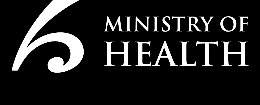
Document 2
Aide-Mémoire
Meeting with CEO of Medicines New Zealand
Date due to MO 1 July 2021
Action required by:
N/A
Security level
IN CONFIDENCE
Health Report number: 20211531
To:
Hon Andrew Little, Minister of Health
1982
ACT
Contact for telephone discussion
Name
Position
Telephone
Fiona Ryan
Manager Therapeutics, System Strategy
S9(2)(a)
and Policy
INFORMATION
OFFICIAL
THE
UNDER
RELEASED
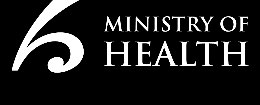
Document 2
Aide-Mémoire
Meeting with CEO of Medicines New Zealand
Date due
1 July 2021
To
Hon Andrew Little, Minister of Health
Security level
IN CONFIDENCE
Health report number: 20211531
1982
Details of
Friday 2 July 2021
meeting
2:30 – 3:00 pm, Minister’s office, 6.1 EW
ACT
Purpose of
Meeting with Dr Graeme Jarvis, CEO of Medicines New Zealand
meeting
INFORMATION
Comment
• This is your first meeting with the CEO of Medicines New Zealand,
the peak body for the pharmaceutical industry in New Zealand.
• Hon Chris Hipkins, as previous Minister of Health, spoke at the
organisation’s annual dinner in July 2020.
OFFICIAL
• This aide-mémoire discloses all relevant information.
THE
Fiona Ryan
Manager Therapeutics
UNDER
System Strategy and Policy
RELEASED
Aide-Mémoire: HR 20211531
1
Document 2
Meeting notes
Medicines New Zealand
The organisation
•
Medicines New Zealand (MNZ) is the industry association representing companies involved in
the research, development, import and manufacture of medicines.
•
It advocates to improve access to what it terms ‘modern medicines’ for New Zealand patients.
•
This year MNZ gained full membership of the International Federation of Pharmaceutical
Manufacturers and Associations (IFPMA), which is based in Geneva. To be accepted as a
member, MNZ had to demonstrate compliance with IFPMA’s code of ethics and values.
1982
• One of MNZ’s workstreams is to apply a code of practice to ensure high standards of ethical
ACT
and responsible promotion of prescription medicines in New Zealand, and wherever possible to
exceed those required by law. Compliance with this code is a condition of membership. (You
will soon be briefed on direct-to-consumer advertising of prescription medicines, as part of the
work on the Therapeutic Products Bil .)
Graeme Jarvis
•
Dr Jarvis has been CEO of Medicines New Zealand for more than six years.
INFORMATION
•
His career has included managing research and development in the primary production and
food sectors, and as a sector manager with New Zealand Trade and Enterprise.
•
He has a PhD in microbial physiology and biotechnology, and an MBA in strategy and
marketing.
OFFICIAL
PHARMAC
THE
Review status
•
The Government has established an independent review of PHARMAC, which will report
back in December. It will focus on two main questions:
UNDER
o how well PHARMAC performs against its current objectives, and whether and how its
performance against these could be improved
o whether PHARMAC’s current objectives maximise its potential to improve health
outcomes for all New Zealanders, and whether and how these objectives should be
changed.
RELEASED
•
Key considerations for the review are:
o the timeliness of PHARMAC’s decision making (in particular for new medicines)
o the transparency and accessibility of decision-making processes
o equity, including access to medicines and devices for Māori and Pacific peoples.
Aide-Mémoire: HR 20211531
2
Document 2
Medicines New Zealand position
•
MNZ has publicly supported the independent review of PHARMAC.
•
Along with some other stakeholders, it has stated a preference for a separate appropriation
for PHARMAC and an increase to the combined pharmaceutical budget.
•
It has complimented the Government on its swift moves to fund COVID-19 health measures,
but has contrasted this with the existing procurement system, which MNZ cal s “not fit for
purpose”.
•
The meeting would be a good opportunity to hear what changes MNZ sees as necessary to
obtain a national medicines procurement system that optimal y serves the needs of both
patients and the country.
1982
Medicines funding
•
The size and fixed nature of the combined pharmaceutical budget (CPB) is out of scope for
ACT
the review. This is because the Government must decide whether an increase in
pharmaceutical spend has priority over other investments in health, or other areas of
potential spending.
•
The CPB is informed by PHARMAC’s projections for population demand, demographics,
supply-side pressures and negotiation with DHBs. PHARMAC has succeeded in expanding
access to medicines, and the range of medicines available to New Zealanders, within a fixed
budget.
INFORMATION
•
The CPB has increased by 23% in the past four years (to $1.119 billion, excluding one-off
COVID-19 costs).
•
In Budget 2021 a further $200 mil ion was al ocated to the CPB over the next four years.
OFFICIAL
International comparisons
•
Health sector groups sometimes compa
THE re New Zealand’s pharmaceutical spend with that of
other OECD countries, as a percentage of total healthcare costs or of GDP. Comparisons can
be misleading because of different countries’ circumstances, and missing data.
•
The proportion of total healthcare spending that goes on pharmaceuticals is affected by
UNDER
what is included in total healthcare spending. This varies between countries.
•
PHARMAC negotiates some of the lowest pharmaceutical prices in the world, reducing
overal expenditure in New Zealand.
•
Institutional and funding arrangements differ. For example, publicly-funded medicines in
New Zealand are free
RELEASED apart from a small co-payment on prescriptions. Medicines available
in some other countries require significant payments from patients.
•
The information provided by PHARMAC to the OECD does not include medicines dispensed
in hospitals or outpatient settings, or medicines purchased over the counter. The OECD has
stopped including New Zealand data in some of its reporting, for reasons unknown.
Aide-Mémoire: HR 20211531
3
Document 2
Access and equity
•
One of PHARMAC’s strategic priorities is ‘Equitable access and use’.
•
One deliverable is “develop and implement medicine access action plans for up to two
priority clinical conditions for Māori and Pacific peoples”. Another is work on enabling
systematic generation of medicine access data insights for priority conditions for Māori,
including dissemination of that information in the sector.
Medsafe and Medicines New Zealand
Fees review
•
Medsafe has reviewed its fees and identified some areas where costs are not being fully
recovered. Some proposed fee changes wil affect MNZ members, with some significant
1982
increases in targeted areas.
ACT
•
MNZ has been consulted on the proposed fee changes. It and some of its members
provided feedback on the proposals. Medsafe is reviewing the submissions and testing the
alternative proposals submitted by MNZ.
•
Overal , MNZ was positive about the review, and Medsafe appreciates its considered
approach. A summary of the final proposals will be available shortly.
Collaboration and engagement
INFORMATION
•
MNZ and Medsafe are beginning a new col aboration and engagement process, with the
first meeting next week.
•
This approach was initiated by MNZ, and Medsafe is pleased to be involved. The meeting is
intended to explore areas where MNZ and Medsafe can work together on issues of mutual
OFFICIAL
interest without compromising the position of each party, and determine a framework for
future engagement.
THE
•
Some small, defined projects have been identified to test the framework before moving on
to larger issues. An example is col aborating to improve application forms. This wil ensure
that the pharmaceutical industry provides the required correct information, so Medsafe can
process applications efficiently.
UNDER This is to the benefit of both parties.
COVID-19 vaccine approval
•
COVID-19 vaccine approvals continue to be assessed by Medsafe. The rol ing nature of the
applications seems to be working well, with positive feedback from pharmaceutical industry.
New regulatory sch
RELEASED eme for therapeutic products
Developing a new regulatory scheme
•
Replacing the Medicines Act 1981 is long overdue. A whole new regulatory scheme for
therapeutic products (including medicines and medical devices) is being developed, and the
new Therapeutic Products Bil is at the heart of this work.
•
The draft Bill was consulted on in 2019. The need to respond to the COVID-19 pandemic
during 2020 has delayed progress, however work has gathered pace during 2021.
Aide-Mémoire: HR 20211531
4
Document 2
•
MNZ made a submission, along with over 440 others. Stakeholders — including MNZ —
broadly support the direction indicated in the exposure draft.
•
The Ministry’s focus has been on the key issues that wil deliver a modern, fit-for-purpose
scheme that proportionately regulates the full range of therapeutic products. The Bill will be
part of a wider system for delivery of safe, effective, high-quality therapeutic products to
New Zealanders.
•
A revised draft Therapeutic Products Bil wil be introduced to the House as soon as possible,
and there wil be further opportunity for stakeholder input when it is considered by a select
committee. [Officials have advised you we are working to have the Bil ready for introduction
in early 2022.]
•
Much of the fine detail of the new regulatory scheme wil be in regulations and other
1982
subordinate instruments, and again these wil be developed in full consultation with
interested parties.
ACT
MNZ’s interest
•
MNZ provided a thorough and considered submission on the Bil . This effort is appreciated,
and its points are being considered carefully. Officials will continue to meet MNZ regularly
and are working through the issues raised in its submission on the Bill.
•
MNZ supports the general design of the new regulatory scheme for therapeutic products.
Along with other stakeholders, MNZ is interested in the detail that wil be contained in
INFORMATION
subordinate instruments.
•
The Bill provides for the purpose and principles of the regime, and sets parameters such as
risk proportionality, cost-effectiveness and impartiality. The future regime wil be consistent
with international best practice.
OFFICIAL
Medicine supply chain
THE
Disruptions
•
The COVID-19 pandemic is causing significant disruption to global supply chains, including
for medicines. Ingredient supply, product manufacturing and shipping are all affected.
UNDER
•
PHARMAC and Medsafe continue to work closely in playing key roles in securing
New Zealand’s medicine supply in a global market disrupted by the pandemic.
•
MNZ’s member companies have been at the forefront of responding to these chal enges.
These companies include those supplying vaccines and other critical medicines. We
appreciate the work MNZ and its members are continuing to do in very chal enging times.
RELEASED
•
Dr Jarvis wil have valuable insights into how the medicine sector is planning to manage a
continued disruption to manufacture and supply.
Aide-Mémoire: HR 20211531
5
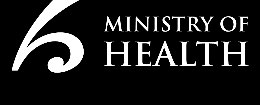
Document 3
Aide-Mémoire
Meeting with Minister Wood to discuss COVID-19 technology and
supporting New Zealand innovation
Date due to MO: 07 October 2021
Action required by:
07 October 2021
1982
Security level:
IN CONFIDENCE
Health Report number: HR 20212199
To:
Minister Verrall, Associate Minister of Health
ACT
Copy to:
Minister Little, Minister of Health
Minister Hipkins, Minister for COVID-19 Response
INFORMATION
Contact for telephone discussion
Name
Position
Telephone
Fiona Ryan
Manager Therapeutics, System
OFFICIAL Strategy S9(2)(a)
and Policy
THE
Caroline Flora
Associate Deputy Director-General,
System Strategy and Policy
UNDER
RELEASED
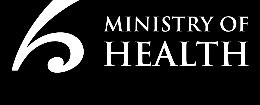
Document 3
Aide-Mémoire
Meeting with Minister Wood to discuss COVID-19 technology and
supporting New Zealand innovation
Date due:
07 October 201
To:
Minister Verrall, Associate Minister of Health
Security level:
IN CONFIDENCE
Health Report number: HR 20212199
1982
Details of
Thursday, 7 October 2021
meeting:
09:30am
ACT
Zoom meeting – your office wil provide the relevant Zoom link
Purpose of
To discuss with Minister Wood a briefing provided to you in your role as
meeting:
Associate Minister of Research, Science and Innovation that sets out alleged
regulatory and other barriers to the adoption of new health technologies,
in particular those funded via the COVID-19 Innovation Acceleration Fund.
INFORMATION
Comment:
Background
• The Ministry of Business, Innovation and Employment (MBIE) has
briefed you in your capacity as Associate Minister of Research,
Science and Innovation on regulatory and other barriers to the
OFFICIAL
adoption of new health technologies, in particular those funded via
the COVID-19 Innovation Acceleration Fund (CIAF).
THE
• You wil be discussing this briefing and the issues raised in it with
Minister Wood on the morning of Thursday 7 October 2021.
• The issues raised are also relevant in your role as Associate Minister
of Health and
UNDER the Ministry of Health has prepared talking-points on
the health-related aspects of the briefing, including the regulation
of therapeutic products. Matters related to the governance of MIQ
and operational MIQ matters should be addressed by MBIE.
• Ministry of Health officials will attend this meeting and will be
available to provide further advice.
RELEASED
• This aide-mémoire discloses all relevant information.
Fiona Ryan
Manager, Therapeutics
System Strategy and Policy Directorate
Aide-Mémoire: <HR20212199>
1
Document 3
Talking points on health-related aspects of
the briefing
Regulation as a ‘barrier’ to innovation & reforms to therapeutics regulation
Risk-proportionate regulation can support innovation
•
Due to the risks to patient safety associated with therapeutic products (including PPE), it is
legitimate that their approval be subject to appropriate oversight and control.
•
Indeed, confidence in a product’s safety – as attested to via a regulator’s approval – is likely
to support innovation by driving the uptake of new health technologies. This is because the
1982
uptake of new health technologies often depends on the wil ingness of clinicians, facility
administrators and patients to accept the use of new technologies.
ACT
•
As such, fit-for purpose regulation supports innovation but provides appropriate guardrails
to ensure that important values, such as patient safety and cost-effectives, are protected.
This applies equally during the COVID-19 pandemic
•
Our response to COVID-19 has required us to be dynamic and open to novel solutions.
•
However, even in these circumstances, regulation plays an important role in securing trust
and acceptance for innovation. For example, contact tracing must be underta
INFORMATION ken in a
privacy-compliant manner or it risks undermining user-acceptance or even the loss of
foundational technologies (eg, Apple and Google’s Bluetooth functionality).
•
Privacy and product safety regulation will therefore remain important whether an innovation
is being applied in MIQ or a workplace.
OFFICIAL
Our reforms to the regulation of therapeutic products will support innovation
THE
•
Although the current
Medicines Act 1981 (the Medicines Act)
has worked well enough during
the current COVID-19 outbreak, we are aware of its shortcomings.
•
As you are aware, the Ministry of Health is leading the development of a new Therapeutic
Products Bil , that wil replace the c
UNDER urrent Medicines Act with a modern regulatory regime.
•
An explicit policy objective for the new Bil is that it supports New Zealand’s trade and
economic objectives. This includes supporting local innovation and the adoption of
technology in New Zealand that can improve productivity and health outcomes.
•
The new regime wil support local innovation by improving the acceptance and recognition
of international standards and the decisions of respected product regulators. It wil also
RELEASED
embed a risk-proportionate approach to product approval.
While options exist to support New Zealand innovators secure local approval, our
regulatory processes must be ‘applicant neutral'
•
Both our existing and new therapeutic regulatory regime will apply equally to local and
international applicants.
•
While there may be good policy reasons to support New Zealand applicants in regulatory
and procurement decisions, both regimes ought to remain neutral with regards to the
Aide-Mémoire: <HR20212199>
2
Document 3
nationality of an applicant. This ensures fairness in decision-making and compliance with
our international trade obligations relating to non-discrimination.
•
Funders of health and medical research could consider how funding rules take into account
the costs of seeking product approval and whether support should extend to engaging
individuals with knowledge of product approval pathways as part of a research team.
Specific medical device issues
A number of CIAF-funded health technologies are ‘medical devices’ for the purpose of the
Medicines Act but others are not likely to be captured
•
I have been advised that COVID-19 testing and diagnostic devices, medical equipment to
treat COVID-19, health monitoring equipment and PPE would fal within the definition of
1982
‘medical devices’ under the current and future therapeutic products regulatory regime.
•
However, other technologies that do not have a ‘therapeutic purpose’, such as contact
ACT
tracing or software to coordinate health services are unlikely to be regulated under the
current and future framework.
A lack of regulation can hinder innovation, just as much as inappropriate regulation
•
As highlighted in the briefing, a lack of regulation has made the development and
implementation of new technologies difficult.
•
Our current regime is lacking in several areas. For example, the Medicines Act
INFORMATION does not
currently set out any product standards for medical devices to meet before they enter the
New Zealand market. Nor does it support the regulator to rely on the decisions of respected
international counterparts.
•
The new Therapeutic Products Bil will introduce pre-market regulatory oversight of medical
OFFICIAL
devices to ensure product safety including setting product standards commensurate with risk
profiles of various types of medical devices. This wil provide applicants with more certainty.
THE
•
The Bill will also enable various market authorisation pathways to be designed for
exceptional circumstances – such as pandemics – to allow timely adoption and deployment
of health technologies while achieving product safety and quality.
UNDER
Additional matters
The slow adoption of new health technologies is a globally recognised issue
•
I understand the frustration of CIAF-applicants. The slow adoption of technology and
improved clinical practices in the health system is an international phenomenon.
RELEASED
•
The barriers to adoption include the funding gap between ‘benchtop and bedside’, risk-
adverse regulatory and workplace cultures, liability fears, clinician autonomy, lack of
incentives to adopt new tools and, to varying extents, government regulation.
•
However, our response to COVID-19 has shown us that we can respond quickly without
compromising patient safety.
•
The wider health reforms agreed to by Government seek to build on the lessons of our
COVID-19 response, as wil decisions around the future therapeutics regulatory regime.
Aide-Mémoire: <HR20212199>
3
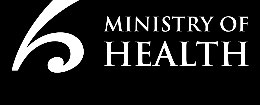
Document 4
Aide-Mémoire
Meeting with representatives from Johnson & Johnson on value-based
healthcare
Date due to MO: 9 November 2021
Action required by:
10 November 2021
Security level:
IN CONFIDENCE
Health Report number: HR20212450
1982
To:
Hon Dr Ayesha Verrall, Associate Minister of Health
ACT
Contact for telephone discussion
Name
Position
Telephone
Fiona Ryan
Manager Therapeutics, System Strategy
INFORMATION
S9(2)(a)
and Policy
Caroline Flora
Associate Deputy Director-General,
System Strategy and Policy
OFFICIAL
THE
UNDER
RELEASED
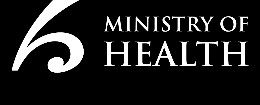
Document 4
Aide-Mémoire
Meeting with representatives from Johnson & Johnson on value-based
healthcare
Date due:
9 November 2021
To:
Hon Dr Ayesha Verral , Associate Minister of Health
Security level:
IN CONFIDENCE
Health Report number: HR20212450
1982
Details of
10 November 2021
meeting:
4:00pm – 4:30pm
ACT
Purpose of
Representatives from Johnson & Johnson New Zealand wish to meet with
meeting/
you to discuss the role of value-based health care in improving health
proposal:
outcomes and reducing the total cost of care. The meeting is also likely to
discuss the independent review of Pharmac and Pharmac’s review process
INFORMATION
for medicines and medical devices.
Comment:
• The Johnson & Johnson representatives attending this meeting are:
OFFICIAL
o Sarah Najdek, Country Manager & Managing Director for
New Zealand
THE
o Carmel Murphy, Government Affairs & Policy Manager
• A biography of the two attendees is included at
Attachment 1.
• The Pharmac review is stil ongoing. The independent review panel
UNDER
provided its Interim Report to the Minister of Health on 16
September 2021 and it is under consideration by the Government.
• Talking points are included at the end of the aide-mémoire.
• This aide-mémoire discloses all relevant information.
RELEASED
Caroline Flora
Associate Deputy Director-General
System Strategy and Policy
Aide-Mémoire: HR20212450
1

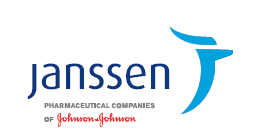

Document 4
Background
Johnson & Johnson and Janssen
• Founded in the USA 135 years ago, Johnson & Johnson is one of the world’s largest
manufacturers of medicines, medical devices and consumer healthcare products.
• Its New Zealand branch was established in 1945 and operates as three divisions:
Company
Areas of focus
•
Johnson & Johnson Pacific
over-the-counter products like Johnson’s Baby,
Band-Aid, Aveeno, Codral and Nicorette
1982
•
innovations in areas such as smoking cessation and
sun protection
ACT
•
Janssen Pharmaceutical Companies of Johnson
pharmaceuticals to prevent, treat and cure diseases
including prostate cancer, blood cancers,
schizophrenia, inflammatory bowel disease and
& Johnson
psoriasis
•
a subsidiary of Johnson & Johnson. Its Covid-19
vaccine was provisionally approved in New Zealand
in July 2021
•
INFORMATION
Johnson & Johnson Medical Pty Ltd
innovative technologies, tools and artificial joints,
biomaterials used in the treatment of many
pervasive conditions from cancer to cardiovascular
disease and trauma surgery
•
a member of New Zealand Health IT (NZHIT) and
Medical Technology Association of New Zealand
OFFICIAL
(MTANZ)
• Johnson & Johnson has also undertaken
THE several projects and programmes to address equity
for Māori and Pacific, including:
o Mauri Ora Social Innovation: a partnership with Te Rau Ora, Manawanui and Waikato
DHB to support Māori with schizophrenia.
UNDER
o Upside Life on the Up Youth Mentoring Partnership: a partnership with Upside to
support young people with adverse childhood experiences to improve education
attainment, physical and mental health.
o Salvation Army Positive Lifestyle Programme for Māori Women: a long-standing
partnership with The Salvation Army to increase the physical, emotional, spiritual and
RELEASED
family health of vulnerable Māori women and their strength as nurturers and leaders
within their whānau.
• Johnson & Johnson have also invested in research and workforce initiatives supporting Māori
through scholarships with the Royal Australian Col ege of Surgeons.
Aide-Mémoire: HR20212450
2
Document 4
Value-based healthcare
• Value-based care (VBC) is about improving the value of healthcare spending by improving the
outcomes that matter most to patients. It seeks to address the rising costs of healthcare
global y, due to people living longer, the rise of chronic diseases, wage rises and the increase
in other costs associated with the design and delivery of healthcare.
• VBC takes a patient-centred and holistic approach to care helping patients recover from
il nesses and injuries more quickly and avoid chronic disease in the first place.
• VBC differs from a fee-for-service or capitated approach and is commonly understood as
centring on six ‘elements’.
o Organise care delivery around the medical conditions of patients or segments of the
population.
1982
o Measure outcomes and cost for every patient.
o Align reimbursement with value.
ACT
o Integrate systems to organise regional delivery of care around matching the correct
provider, treatment, and setting.
o Geography of care: national centres of excellence to provide care for exceedingly
complex patients.
o Use an information technology system to support the value-based approach.1
• VBC is supported by value-based procurement, which focuses on value, is outcomes-based,
integrated, focused on total cost, prospective and strategic.
INFORMATION
• Key stakeholders in the pharmaceutical and medical device sector support VBC models. The
Medical Technology Association of New Zealand (MTANZ) support a value-based approach to
medical device procurement.
Pharmac’s role in providing affordable, equ
OFFICIAL itable access to medicines and
medical devices
THE
• Pharmac is the Crown entity responsible for making decisions about what pharmaceuticals
are publicly funded within a fixed budget and negotiating the best value for money for them
on the international market.
UNDER
• Since it was established, Pharmac’s role has widened to also include medical devices, vaccines,
haemophilia products, cancer medicines and hospital medicines.
The independent review of Pharmac
• As a large supplier of therapeutic products, Johnson and Johnson and its subsidiaries have an
interest in the current
RELEASED independent review of Pharmac.
• On 2 March 2021, the Government announced an independent review into Pharmac to ensure
that the public can have confidence in it and its role in the wider health and disability system.
The review is being undertaken by an expert review Committee chaired by Sue Chetwin.
• The review focuses on two areas:
1 Christer Mjåset et al, ‘Value-Based Health Care in Four Different Health Care Systems’
New England Journal of
Medicine Catalyst (November 2010) DOI: 10.1056/CAT.20.0530.
Aide-Mémoire: HR20212450
3
Document 4
o How well Pharmac performs against its current objectives and whether and how its
performance against these could be improved.
o Whether Pharmac’s current objectives maximise its potential to improve health
outcomes for al New Zealanders as part of the wider health system, and whether and
how these objectives should be changed.
• Note: VBC and value-based procurement are not explicitly within the terms of reference for
the review.
• Submissions to inform the review closed on Friday 16 July. As the review is independent of
the Ministry, we do not have access to the submissions, including any possible submission
from Johnson and Johnson.
• An independent review of Pharmac is currently underway, and Minister Little intends to take
1982
the Pharmac review interim report to Cabinet before the end of 2021. Pending the outcome
of Cabinet consideration, Minister Little has indicated he intends to release the interim report
publicly.
ACT
• The Ministry and Pharmac have each now received copies of the interim report in confidence
for comment fol owing the Minister’s approval (noting the interim report is subject to any
necessary minor, technical and editing changes prior to public release).
New regulatory scheme for therapeutic products
• The Ministry of Health is continuing to progress the Therapeutic Products Bil . It will replace
INFORMATION
the Medicines Act 1981 which is outdated and has not kept pace with changes in health
technology.
• The Therapeutic Products Bil wil provide assurance of the safety, quality and efficacy of
therapeutic products which include medicines and medical devices. It will deliver a modern,
fit-for-purpose scheme that proportionately regulates t
OFFICIAL he full range of new and emerging
medical technologies.
• The Bill will be introduced as soon as po
THE ssible and there wil be opportunities for submissions
as part of the Select Committee process.
• Public consultation on an exposure draft of the Bil took place between December 2018 and
April 2019, and MTANZ provided a submission on the draft Bil .
UNDER
Proposed talking points
•
I would be interested in how you see value-based healthcare playing a role in our health system reforms
•
The Government is placing equity and Te Tiriti at the centre of the reforms. I would be keen to hear your
suggestions for how va
RELEASED lue-based healthcare can take account of equity?
•
Has COVID-19 changed the way your company and others are approaching the issue of value-based
healthcare?
•
How do you see data and digital technologies as an enabler or barrier to a shift to value-based
healthcare?
Aide-Mémoire: HR20212450
4

Document 4
Attachment 1: Biography of attendees
Sarah Najdek
Sarah is General Manager and Country Director of Johnson &
Johnson Medical New Zealand.
Sarah took up this role earlier this year. Her career has been
mainly in Johnson & Johnson and its subsidiary companies in
Australia, Singapore and New Zealand, particularly in business
and market development in relation to medical devices.
1982
Sarah is on the executive board of the Medical Technology
Association of New Zealand, the peak industry body for the medical device industry in New Zealand.
ACT
Carmel Murphy
Carmel is Johnson and Johnson’s government affairs & policy manager and has over twenty years’
experience in the healthcare industry across Australia and New Zealand. Carmel previously worked
at Pfizer, most recently as its corporate affairs manager in New Zealand.
INFORMATION
OFFICIAL
THE
UNDER
RELEASED
Aide-Mémoire: HR20212450
5
Document 5
Event briefing
Speech for the Medicines New Zealand Annual Stakeholder Dinner 2022
Date due to MO: 8 August 2022
Date of Event:
24 August 2022
Security level:
IN CONFIDENCE
Health Report number:
20221271
To:
Hon Andrew Little, Minister of Health
1982
ACT
Contact for telephone discussion
Name
Position
Telephone
Fiona Ryan
Manager Therapeutics Policy,
S9(2)(a)
Strategy Policy and Legislation
INFORMATION
Steve Waldegrave
Acting Deputy Director-General,
Strategy Policy and Legislation
OFFICIAL
THE
UNDER
RELEASED
Document 5
Event briefing
Speech for the Medicines New Zealand Annual Stakeholder Dinner 2022
Date due:
8 August 2022
To:
Hon Andrew Little, Minister of Health
Security level:
IN CONFIDENCE
Health Report number: 202206866
1982
ACT
About the Event
Purpose
You are attending and speaking at the Medicines New Zealand
Parliamentary Dinner on 24 August 2022.
Event/visit details Date:
24 August 2022
INFORMATION
Time:
5.30 to 9.00 PM
Venue:
Banquet Hall, Parliament
Attendees
100 (in person) and 50 (online) delegates from New Zealand and
OFFICIAL
Australia – mostly representing member organisations of Medicines
New Zealand.
THE
Organisation
Medicines New Zealand is an industry association representing
companies engaged in the research, development, manufacture and
marketing of prescription medicines. Medicines New Zealand advocates
for the medici
UNDER nes industry.
Ministry
A number of senior Ministry officials have been invited to attend the
representatives
dinner function.
Other information You have been invited to speak for 5-10 minutes.
RELEASED The panel speakers for the event are Richard Vines, Professor David
Thomas, Professor Cris Print and Associate Professor Māui Hudson. The
topic of their speech is
Chal enges and Opportunities with Genomic
Medicine.
Brief biographies of the speakers provided by Medicines New Zealand
are in
Appendix Four.
You will also attend a separate event organised by the Digital Health
Association (formerly Health IT) for this evening from 5:30 – 6pm. You
Briefing: HR20221271
Document 5
wil then move to the Medicines New Zealand Dinner event. A separate
event briefing wil be provided for the event organised by the Digital
Health Association.
Media
Media representatives wil be present.
Background and details of the Parliamentary Dinner
1.
Every year Medicines New Zealand (Medicines NZ) holds a Parliamentary dinner and
invites leading researchers, academics, and experts to address medicines-related health
issues from global and local perspectives. Members of Parliament (MPs) are invited.
2.
The Parliamentary dinner is regularly attended by MPs, health specialists, researchers,
1982
pharmaceutical representatives, and representatives from industry associations such as
the Medical Technology Association of New Zealand. In the past, the Chief Executives,
ACT
board members and clinicians from district health boards also attended.
3.
This year, the theme of the event is ‘Chal enges and Opportunities with Genomic
Medicine’. Further information about genomic medicines is provided in ‘Topical issues
that may be discussed at the dinner’, below.
Medicines New Zealand
INFORMATION
4.
Medicines NZ is an industry association representing companies engaged in the
research, development, manufacture, and marketing of prescription medicines.
5.
It advocates for the medicines industry on a range of issues including access to new
and novel medicines including funding and regulatory processes for the approval of
OFFICIAL
medicines, with a particular focus on timeliness and cost of obtaining approval. It
compares the New Zealand medicines funding and purchasing system with other OECD
countries.
THE
Topical issues that may be discussed at the dinner
Health and Disability Reforms
UNDER
6.
Given the recent health and disability reforms, you are likely to receive questions on the
progress of the reforms and how the new agencies; Te Aka Whai Ora – the Maori Health
Authority, Te Whatu Ora – Health New Zealand and Public Health Agency are taking
shape.
Budget 2022
RELEASED
7.
Medicines NZ’s post-Budget release of 19 May 2022 expressed concern that the Budget
did not adequately address a necessary increase in access to medicines nor the backlog
of the waiting list for publicly funded medicines. It makes international comparisons for
funding medicines.
Pharmac review
8.
Medicines NZ had another recent media release on 1 June 2022, which relates to the
final report of the independent Pharmac review. It notes Medicines NZ’s concerns of a
Briefing: HR20221271
Document 5
lack of clarity around the Government’s next steps towards improving New Zealand’s
public medicines funding system based on the panel’s recommendations. The media
release is attached at
Appendix three for your information. The Ministry recently
provided you with talking points on this topic [H20220960].
Therapeutic Products Bill
9.
The Therapeutic Products Bil (the Bil ) wil repeal and replace the Medicines Act 1981
and provide a modern, comprehensive, cost effective regulatory framework for
therapeutic products (including medicines, medical devices, and biologics).
10.
The Bill will provide for acceptable quality, safety and efficacy of therapeutic products
across the product’s lifecycle with risk-proportionate regulation. Under the Bill,
therapeutic products wil require an authorisation from the regulator before they can
1982
be imported and supplied in New Zealand. Usual y (but not always), this authorisation
wil fol ow an evaluation by the Regulator of information supplied by product
ACT
manufacturers or suppliers.
11.
The new therapeutic products regulatory regime wil support and enable the
transformed health and disability system. It will enable service innovation, particularly in
primary care and community settings. The new scheme wil also align with
international best practice and wil be future-proofed with flexibility to ensure effective
control over new technologies.
12.
The Bil provides opportunities for service innovation by streamlining out
INFORMATION dated
regulatory barriers in pharmacy practice and prescribing authorities. It wil also provide
clear regulatory pathways for new and emerging health technologies including
biologics and medical devices (e.g., genomic medicines, software as a medical device
including artificial intelligence and machine learning).
OFFICIAL
Genomic medicine
13.
Genomic medicine is an interdisciplinary medical specialty involving the use of genetic
THE
sequence (genome) information about an individual as part of their clinical care (e.g.,
for diagnostic or therapeutic decision-making) and the health outcomes and policy
implications of that clinical use.
14.
Genomic technology is rapi
UNDER dly expanding in testing, sequencing and genetic
modification techniques (such as CRISPR) and may give rise to new treatments and
interventions. ‘Precision medicine’ or ‘personalised medicine’ is a clinical application of
genomic medicine that develops targeted prevention or treatment for a particular
genomic outcome determined by diagnostic genetic testing.
Genomic medicine under the Therapeutic Products Bill
RELEASED
15.
Products involved in genomic medicine intended for a therapeutic purpose will be
regulated under the Therapeutic Products Bil through their appropriate product
categories. For example, gene therapies and advanced cell-based therapies (such as
CAR-T personalised cancer treatments) are defined as ‘biologics’ (i.e., the class of
therapeutic products that are or contain human cells or tissues) and wil be regulated as
medicines, as their effect on the body is through a pharmacological, immunological,
metabolic or genetic mode of action. Genetic testing kits used at home or in a clinical
setting will likely be regulated as medical devices.
Briefing: HR20221271

Document 5
16.
Under the Bill, these products wil be assessed by the regulator in a risk-proportionate
manner to ensure safety, quality and efficacy of genomic medicines for market
authorisation. New and bespoke pathways wil be designed for novel genomic
medicines and their clinical trials will be regulated as a controlled activity requiring a
licence or permit. The Bil wil provide a clear pathway to market and clinical use for
these novel therapies.
17.
The therapeutic product regulatory regime for biologics will run in parallel with other
regulatory approval processes, including approval through the Environmental
Protection Authority for al genetical y modified organisms under the Hazardous
Substances and New Organisms Act 1996. Where appropriate, the product wil be
aligned with other regimes involving human cells and tissues and genetic information,
1982
including the Human Tissue Act 2008 and the Human Assisted Reproductive
Technology Act 2004.
ACT
Attached information
18.
Further event information is attached at
Appendix One. This includes event attendees
and the order of proceedings.
19.
A speech is provided in
Appendix Two.
20.
Medicines New Zealand’s recent media release of 19 May 2022 and 1 June 2022 is
attached as
Appendix Three
INFORMATION
21.
Biographies of panel members are provided in
Appendix Four.
OFFICIAL
THE
Steve Waldegrave
Acting Deputy Director-General
UNDER
Strategy Policy and Legislation
Date: 03/08/2022
RELEASED
Briefing: HR20221271
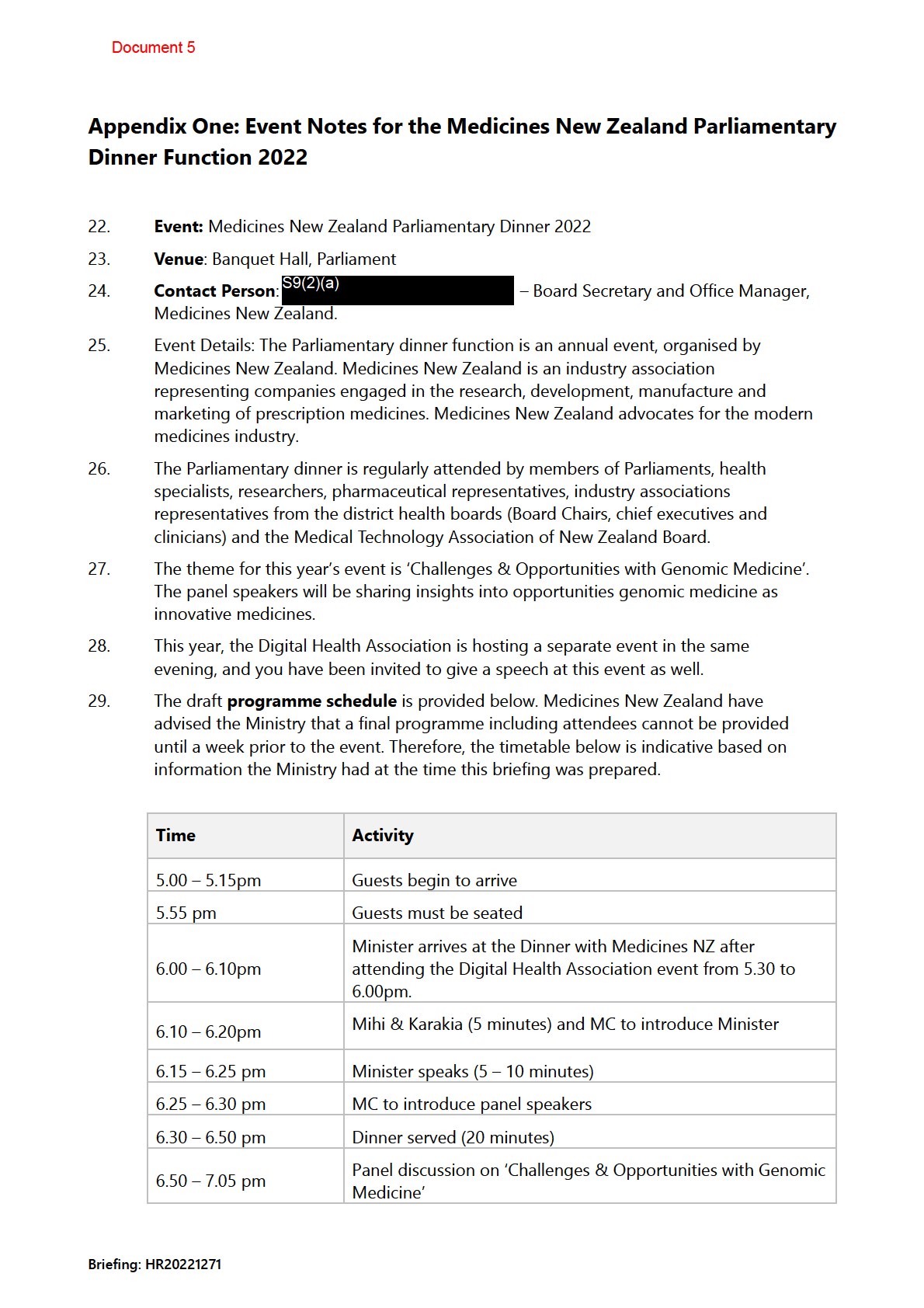 1982
ACT
INFORMATION
OFFICIAL
THE
UNDER
RELEASED
1982
ACT
INFORMATION
OFFICIAL
THE
UNDER
RELEASED
Document 5
7.05 – 7.15 pm
Dessert served
7.15 – 7.30 pm
Free flowing Q&A – MC
7.30 pm
Final speech and thanks by the Chair of Medicines NZ
7.30 pm
House of Representatives resumes (some MPs may depart)
9.30 pm
Event concludes
30.
A list of invitees and attendees wil be provided by Medicines New Zealand to your
office a week prior to the event.
31.
A draft speech is attached at
Appendix Two.
1982
32.
Media release;
a. We note that Medicines New Zealand issued a press release on 19 May 2022, after
ACT
the release of Budget 2022. In its press release it raised concerns about medicines
funding and access to publicly funded medicines including inequity issues for
Māori and Pacific peoples.
b. Medicines New Zealand also issued a press release on 1 June 2022, after the
release of the final report of the independent Pharmac review. The press release
praised the Government’s initiative to undertake an independent review and to
take on board most of the recommendations made by the panel. It also noted the
INFORMATION
lack of clarity around how the Government wil act on the accepted
recommendations and the rationale for rejecting some of the recommendations.
The press release is attached for your information (
Appendix three).
OFFICIAL
THE
UNDER
RELEASED
Briefing: HR20221271
Document 5
Appendix Two: Speech
Medicines New Zealand Parliamentary dinner speech – 24 August 2022
Mihi
Tēnā koutou katoa
Tenei te mihi ki a koutou
1982
Kua tae mai i runga i te kaupapa o te ra
ACT
Ara ko Te Medicines NZ Annual Stakeholder Dinner
Tēnā tato katoa
Acknowledgements
INFORMATION
It’s a pleasure to join you for the Medicines New Zealand Annual Dinner 2022.
I would like to begin by acknowledging Medicines New Zealand for the valuable role you
play in advocating for medical innovation in Aotearoa New Zealand.
OFFICIAL
THE
What COVID has taught us
The last two and a half years have reiterated the urgent need for a flexible health system
UNDER
that can provide appropriate and timely care.
While our health system has performed admirably throughout the pandemic, and the
people working within it are without a doubt world-class, we need to create a sustainable,
future-proof system th
RELEASED at works for al New Zealanders, no matter who they are or where
they live.
Our new reformed health system is the first step on this journey, and our significant
investment shows our commitment to achieving this vision. It wil not be an overnight fix,
we’re trying to rebuild after years of underinvestment, but the momentum is there.
Briefing: HR20221271
Document 5
New Zealanders want to, and should be able to access health information, support, and
services closer to home, and even in their own home.
While the systemic issues were not new, COVID-19 was a catalyst for a significant shift in
the way the health system is used to support the health of New Zealanders.
Our health sector needed to respond to deliver critical new functionality at pace, and
essentially, at a distance.
The virtual care we saw stood up during the pandemic provided more ways for people to
1982
access safe, quality, and convenient services.
ACT
It has also driven expectations of new ways to connect to health services and greater
expectations and understanding from New Zealanders and the potential for delivery of
support and services across Aotearoa.
Also, the rapid development of effective and safe vaccines during the pandemic represents
INFORMATION
an unprecedented collaboration between researchers, industry, clinicians and Government.
In driving new vaccine technologies, such as mRNA vaccines, it has provided us with new
gene-based tools to fight not only COVID-19 but future pandemics and seasonal il nesses
OFFICIAL
like influenza.
THE
UNDER
Therapeutic Products Bill
The Therapeutic Products Bil is an integral part of the health and disability reforms.
The Medicines Act 1981 has not kept pace with changes in policy, clinical practice, or
RELEASED
technological advances. The Therapeutic Products Bil seeks to address these challenges.
The Bill, which covers medicines, medical devices, biologics, cell and tissue therapies, and
natural health products, is a key Government priority. The Bil is expected to be introduced
to Parliament in late 2022.
The Bil wil help deliver better health outcomes for people and ensure consumer safety. It
will provide New Zealanders with the assurances they would expect about the quality,
Briefing: HR20221271
Document 5
safety and efficacy of therapeutic products and devices, and the quality and safety of
natural health products.
To keep pace with the discoveries already made, and those advances stil to come, New
Zealand needs a new therapeutic products regime that provides for the comprehensive,
flexible, robust, and risk-proportionate regulation of medicines, medical devices, biologics
and cel and tissue therapies.
Further work on the Bil has focused on addressing sector feedback from the public
1982
consultation in 2019, the current work underway on the health and disability system
ACT
reforms, as wel as new health technology changes and lessons from COVID-19.
The new regulatory regime wil operate as part of a transformed health and disability
system. It will enable service innovation, particularly in primary care and community
settings. It wil also align with international best practice and wil be future proofed with
flexibility to support innovation and ensure effective control over new tech
INFORMATION nologies.
Te Tiriti and equity
OFFICIAL
The Bill will embed the principles of Te Tiriti which will mean that we never lose sight of the
THE
need to deliver and provide for equitable health outcomes.
We want to ensure the new regulator can build productive Māori-Crown relationships and
ensure the development and adm
UNDER inistration of the wider therapeutic products regulatory
regime has an appropriate equity lens.
Genomic medicine
RELEASED
Turning now to genomic technology – which is rapidly expanding in testing, sequencing
and genetic modification techniques (such as CRISPR), and may give rise to new
treatments and interventions.
Products involved in genomic medicine intended for a therapeutic purpose will be
regulated under the Bil through their appropriate product categories. For example,
Briefing: HR20221271
Document 5
gene therapies and advanced cel -based therapies (such as CAR-T personalised cancer
treatments) are defined as ‘biologics’ (i.e., the class of therapeutic products that are or
contain human cells or tissues) and will be regulated as medicines. Genetic testing kits
used at home or in a clinical setting wil likely be regulated as medical devices.
Under the Bil , these products wil be assessed by the regulator in a risk-proportionate
manner to ensure safety, quality and efficacy for genomic medicines for market
authorisation.
1982
New and bespoke pathways wil be designed for novel genomic medicines and their
ACT
clinical trials will be regulated as a controlled activity requiring a licence or permit.
The therapeutic product regime for biologics will run in parallel with other regulatory
approval processes, including approval through the Environmental Protection Authority
for all genetically modified organisms under the Hazardous Substances and New
Organisms Act, and existing ethics approval processes.
INFORMATION
Where appropriate, the product wil be aligned with other regimes involving human
cel s and tissues and genetic information, including the Human Tissue Act and the
Human Assisted Reproductive Technology Act.
OFFICIAL
THE
[Content to be signed off by Minister’s office]
UNDER
Therapeutic Products Bill updates
New regulator
As part of the new therapeutic products regime, the new regulator wil cover a broader
RELEASED
scope of products and activities than Medsafe - for example, medical devices, advanced
therapies, natural health products and clinical trials.
It will be responsible for ensuring the safety, quality and efficacy of regulated products
across their lifecycle. It will design and implement proportionate risk-based market
authorisation pathways to support the timely availability of products. Its functions wil
include market authorisation, licensing, monitoring, compliance, and enforcement.
Briefing: HR20221271
Document 5
The new regulator wil be a branded business unit within the Ministry of Health, with an
independent statutory officer appointed to undertake specific regulatory functions. It wil
recover its costs largely through fees and levies, similar to Medsafe.
Modern enforcement tools
The Bil also includes a range of enforcement tools that include tiered criminal offences,
strict liability offences, improved infringement notices and a civil pecuniary penalty regim
1982 e.
Promoting trust and confidence in the new regulatory regime is crucial.
ACT
DTCA-PM
I know some of you wil be interested in an update on Direct to Consumer Advertising for
Prescription Medicines (DTCA-PM).
INFORMATION
DTCA-PM has several benefits: it can lead to more awareness of health conditions and
earlier detection of diseases, increased literacy, and better relationships between
prescribers and patients. GPs report being confident ab
OFFICIAL out resisting patient pressure to
prescribe particular medicines.
THE
In New Zealand advertising for medicines, medical devices and medical treatments is
regulated through government regulation and self-regulation by industry and professional
UNDER
organisations. Only minimal enforcement is currently needed, suggesting the combination
of government regulation and self-regulation is effective.
The Therapeutics Product Bil contains an enhanced status quo. It continues al owing wel -
regulated DTCA-PM an
RELEASED d wil provide the regulator with more modern and effective
enforcement tools.
Briefing: HR20221271
Document 5
Pharmac Review
Lastly, turning to Pharmac, you’ll be aware that the Pharmac Review was released earlier in
June. The review looked into whether Pharmac makes the best contribution to improving
health outcomes for all New Zealanders, particularly Maori and Pacific peoples.
The review has been an opportunity to ensure Pharmac is wel positioned for our future
health needs. While the review found that Pharmac performs an important role and New
Zealanders benefit from its work - its purpose, its performance needs to improve,
1982
especially on equitable outcomes. Pharmac needs to be far more integrated into the health
ACT
system. Its work and information needs to be more open and accessible.
Pharmac has accepted the review findings and is committed to making the significant
changes needed. It has some work already underway but also recognises there is
considerably more to do.
INFORMATION
Closing
We’ve made good progress in developing the systems and structures needed to support
OFFICIAL
our health system and the wellbeing of New Zealanders. However, this is only the
THE
beginning. There is stil a lot of mahi ahead.
UNDER
The reforms wil take time to bed in, but I’m encouraged with the progress to date. The
building blocks are in place, the commitment is there, and the momentum is there.
It’s going to take all of us working together to achieve pae ora for all New Zealanders, and
RELEASED
I look forward to continuing this journey alongside you.
Nō reira, tēnā koutou, tēnā koutou, tēnā tātou katoa.
Briefing: HR20221271
Document 5
Appendix Three
1. Medicines New Zealand media release - 19 May 2022
Budget 2022 Medicines Investment: A start, but also a potential rapid and painful
stop? Announcement in the budget of $191 mil ion of new investment for medicines over the
next two years is a start, but the fact that there is no confirmed additional investment
beyond those two years is both a risk and concern, especial y when compared to most
other health packages in this year's budget where four years of investment was confirmed.
1982
It also shows the Government is starting to partial y honour its commitment to improving
New Zealand’s access to medicines and patients’ wel being. This action today wil also start
ACT
to help solve both the medicines access crisis and medicines inequity issues for Māori and
Pacific peoples.
The establishment of a defined medicines appropriation in Budget 2022, has also now
made it clear the level of medicines investment is only 5% of the total health portfolio. This
investment level wil continue to see New Zealand at the bottom of the OECD rankings
compared to our peer nations such as Australia and the UK where the investment level is
over 10%.
INFORMATION
“This should be a concern, as polls show that 90% of New Zealanders believe that
medicines are an important part of an effective public health system. Clearly, lower levels
of investment in medicines has knock-on effects, as it is wel established that modern
medicines reduce pressures upstream in health system
OFFICIAL s, by lowering hospitalisation rates,
and reducing mortality, as wel as allowing patients to become an active part of their
whānau and community again”. Says Dr
THE Graeme Jarvis, CEO of Medicines New Zealand
New Zealand’s well-established extensive backlog of medicines sitting on various waiting
lists to be publicly funded including some that are still waiting up to ten years or more due
to funding shortfal s, and a further 73 medicines on the Options for Investment (OFI) List
UNDER
requiring over $400 mil ion per year in additional public funding to clear it, also reinforces
the problem and other issues with the medicines procurement system.
“While the new funding commitments to grow the medicines budget can slowly start to
clear this backlog of recommended medicines on these lists - there is much more to be
done. The modern me
RELEASED dicines industry remains committed to assisting the Government
after the Pharmac Review’s final report is released to deliver the right solutions to the most
critical stakeholders in the public health system- patients and their whānau '' says Dr Jarvis.
END
Briefing: HR20221271
Document 5
2. Medicines New Zealand media release – 1 June 2022
Pharmac review: a step in the right direction, but ‘devil will be in the detail’ for
government on actions to be taken.
Medicines New Zealand believe that the final report of the Independent Pharmac Review
panel is a step in the right direction. There is, however, much more work to be done as the
Government’s response has not clearly stated how it wil act on the recommendations
made for the improvement of New Zealand’s publicly funded medicines funding system.
The report’s 33 recommendations clearly show the need for Pharmac to focus on enhanced
equity, more transparency and timeliness regarding medicines procurement processes for
1982
the benefit of both patient health and wel being outcomes and to help optimise
efficiencies in the public health system.
ACT
“A number of the recommendations, if fully adopted, such as improved
patient engagement and embedding equity principles into aspects of decision-making are
pleasing to see. This could see more transparent, timely, and equitable processes and
outcomes from Pharmac in the near term and into the future” says Dr Graeme Jarvis, CEO
of Medicines New Zealand.
“The Minister of Health has stated that the Government rejected only two of the
INFORMATION
recommendations and therefore accepted the majority of the recommendations in the
report. However, it is not clear what actions the Government is taking on the remaining
recommendations or which ones they accept in full or in part or are modifying further.
Therefore the ‘devil wil be in the detail’ and something that all stakeholders need to
observe closely.”
OFFICIAL
“The Review Panel has acted with great integrity and despite its limited scope delivered a
THE
very comprehensive and strong plan of action for positive change for patients. It is
important that the Government takes on board as many of the recommendations made by
the Panel in full for overal system improvements. As to ignore some of their
recommendations "waters down" the potency of the plan. “
UNDER
“Any cherry-picking of recommendations or meaningless actions by the Government
would have major impacts not only on patient health outcomes and wel being, but also
would further impact the health system performance and efficiency. That would be in no-
one's interest.“
RELEASED
END
Briefing: HR20221271


Document 5
Appendix Four: Biography of panel members
Richard Vines
Founder and Chairman
Richard attended University of Melbourne where he studied Maths and
Statistics. He then trained as an Actuary but was seduced by the fledgling
IT industry before qualifying. After several years working in software
development, Richard formed his own software company which he then
sold in 1990 before embarking on a second software venture in Europe.
In 1996, Richard returned to Australia where he was retained by an American company to establish
1982
a sales channel in Australia. In 2001 Richard left the IT industry and has since worked in a number
of not-for-profits associated with retail, politics and health.
ACT
In 2012 Richard and his wife Kate established Rare Cancers Australia, a patient advocacy group
whose mission is to improve the lives and outcomes for rare cancer patients. Richard is now a
highly sort after spokesperson for cancer patient advocacy issues and is a member of a number of
committees.
In September this year, Richard was named Co-Chair of the Cancer Drugs Alliance Committee, a
stakeholder coalition tasked to promote timely access to drugs for cancer patients.
INFORMATION
Professor David Thomas
NHMRC Principal Research Fellow and CEO of Omico: the Australian
Genomic Cancer Medicine Centre.
OFFICIAL
David undertook medical training at the University of Melbourne (1982-88),
followed by post-grad
THE uate training as a Felow of the Royal Australasian
College of Physicians in medical Oncology (awarded 1997). His doctoral
studies at the Universty of Melbourne, and was awarded my PhD in 1997.
He undertook post-doctoral research at Harvard Medical School (1998-2000), before moving back
UNDER
to Melbourne to set up his own laboratory, initial y at St Vincent’s Hospital (2001-3), then at Peter
MacCal um Cancer Centre (2002-2014).
David was the founding Chair and board member of the Australasian Sarcoma Study Group (2007-
18). He was the Director of the adolescent and young adult (AYA) cancer program,
onTrac@PeterMac (2005-10). In 2018, he was the President of the Connective Tissue Oncology
RELEASED
Society. He was head of the Cancer Theme at the Garvan Institute (2014-20).
In 2018, David established Omico, the Australian Genomic Cancer Medicine Centre.
Briefing: HR20221271


Document 5
Professor Cris Print
Professor in the University of Auckland’s Department of Molecular Medicine and
Pathology. He holds a medical degree and PhD from the University of Auckland
and his current work centres around the use of genomics and bioinformatics to
understand cancer.
His research team apply cutting-edge techniques in these fields to the Maurice
Wilkins Centre’s ‘Immuno-oncology' flagship programme. He leads the Genomics
Into Medicine Strategic Research Initiative in Auckland and Chairs the Auckland
Regional Tissue Bank Scientific Advisory Board.
He is a Director of the NZ Institute of Environmental Science and Research (ESR), Vice President of the
Auckland branch of the Royal Society of NZ (The Auckland Museum Institute) and is a member of th
1982e
Science Leadership Team of New Zealand’s 'Healthier Lives' National Science Chal enge. Previously, he
served as President of the NZ Society for Oncology and was Director of the Bioinformatics Institute at
ACT
the University of Auckland.
Assoc. Prof. Māui Hudson
Iwi: Te Whakatohea, Ngā Ruahine, Te Mahurehure
Māui is an interdisciplinary researcher who focuses on the application of
mātauranga Māori to decision-making across a range of contemporary
contexts from new technologies to health, the environment
INFORMATION to innovation.
He has co-authored a number of ethical guidelines including Te Ara Tika:
Guidelines on Māori Research Ethics, a framework for researchers and ethics
committee members; Te Mata Ira Guidelines on Genomic Research with
Māori; and He Tangata Kei Tua Guidelines on Biobanking w
OFFICIAL ith Māori.
Māui's current research projects include:
THE
•
Te Nohonga Kaitiaki - developing Guidelines for Genomic Research with Taonga Species
•
Co-Innovation Interface - exploring Māori perspectives on gene editing
•
Te Tuakiri o te Taonga - developing Biocultural Labels to recognise indigenous rights in
genomic data
UNDER
•
He Papa Moana - developing a cross cultural ocean knowledge platform as part of the
Moana project
•
Māori IP & Responsible Innovation - understanding the intersection between intellectual
property and Indigenous data sovereignty.
Māui supports Māori to engage in the research sector as a co-convener of SING Aotearoa, the New
RELEASED
Zealand chapter of the Summer Internship for Indigenous Genomics, and Te Ahu o Rehua, a
Network for Cross Cultural Ocean Knowledge connecting expertise across the fields of climate
change, marine science, ocean health, voyaging and non-instrument navigation. Māui also
advocates for Māori rights and interests through Te Mana Raraunga: Māori Data Sovereignty
Network and the Global Indigenous Data Al iance. He is a co-founder of ENRICH, a joint initiative
between the University of Waikato and New York University, and a co-developer of the Biocultural
Labels Initiative.
END.
Briefing: HR20221271
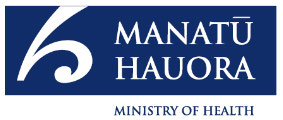
Document 6
Aide-Mémoire
Meeting with the Medical Technology Association of New Zealand
Date due to MO: 15 November 2022
Action required by:
N/A
Security level:
IN CONFIDENCE
Health Report number: H2022016300
To:
Hon Andrew Little, Minister of Health
1982
Consulted:
Health New Zealand: ☐ Māori Health Authority: ☐
ACT
Contact for telephone discussion
Name
Position
Telephone
John McGrath
Director, Priority Projects
S9(2)(a)
Strategy Policy and Legislation
INFORMATION
Steve Waldegrave
Associate Deputy Director-General
Strategy Policy and Legislation
OFFICIAL
THE
UNDER
RELEASED

Document 6
Aide-Mémoire
Meeting with the Medical Technology Association of New Zealand
Date due:
15 November 2022
To:
Hon Andrew Little, Minister of Health
Security level:
IN CONFIDENCE
Health Report number: H2022016300
1982
Details of
11:30 – 12 pm, 16 November 2022 at your office
meeting:
ACT
Purpose of
You are meeting with members of the Medical Technology Association of
meeting/
New Zealand (MTANZ). MTANZ wants to discuss the future regulation of
proposal:
medical devices under the Therapeutic Products Bil , industry views on
Health Technology Assessment and procurement of medical devices.
INFORMATION
Comment:
Meeting with MTANZ
• MTANZ is the leading industry body representing medical
technology manufacturers, importers and distributers of medical
devices in New Zealand.
OFFICIAL
• You are meeting with Cushla Currie, Chief Executive Officer of
MTANZ; Erin Currie, Board Chairperson and two MTANZ members.
THE
Officials from Manatū Hauora - Ministry of Health (the Ministry) will
also attend. Meeting details including attendees are provided in
Appendix 1.
Appendix 2 contains short bios of members of the
MTANZ delegation.
UNDER
• MTANZ informed the Ministry of topics they wish to discuss with
you, including the medical device industry’s role in the healthcare
sector in Aotearoa, future regulations of medical devices under the
Therapeutic Products Bil , Health Technology Assessment and
Pharmac’s procurement of medical devices. This aide-mémoire
p
RELEASED rovides you with some background information on these matters
and talking points (
Appendix 3) to support you.
• This aide-mémoire discloses all relevant information.
Aide-Mémoire: H2022016300
1

Document 6
Steve Waldegrave
Associate Deputy Director-General
Strategy Policy and Legislation
Purpose
1.
MTANZ has advised the Ministry that their primary focus for the meeting is to discuss:
1982
a. MTANZ’s general support for the Therapeutic Products Bil (the Bil ) and support for
a “light touch” regulatory regime for medical devices
ACT
b. MTANZ’s views on Health Technology Assessment
c. Pharmac’s role in the procurement of medical devices.
2.
Attached are meeting details (
Appendix 1), short bios on MTANZ attendees (
Appendix
2) and talking points to support you at this meeting (
Appendix 3).
Background and context
3.
MTANZ is the leading industry body representing medical technology ma
INFORMATION nufacturers,
importers and distributers of medical devices in New Zealand. Its members supply
approximately 95 percent of al medical device products used in New Zealand public and
private healthcare facilities.
4.
In July 2022, Manatū Hauora presented on the Bil and the future regulation of medical
OFFICIAL
software at the MTANZ-organised HealthTech Week conference in Auckland. This
conference included representatives from MTANZ. Questions and comments from
attendees were general y supportive
THE of the intention of the Bil but sought further
information on transitional arrangements for currently available products and cost
recovery.
What regulation of medical devices under the Bill will look like
UNDER
5.
MTANZ is likely to advocate aligning our medical device regime with international
norms. Such an approach was reflected in the 2018 exposure draft Bill and continues to
be the case. Since the 2018 public consultation, the Ministry has focused on
strengthening provisions in the Bill to improve international alignment.
6.
Specifically for medical devices, the Bill adopts internationally aligned definitions that are
RELEASED
significant in determining the scope for regulating medical devices and market players,
such as responsible manufacturers, remanufacturers and sponsors who are subject to
obligations under the Bil .
7.
The Bill empowers regulation and rule-making including risk classification rules modelled
on the International Medical Device Regulators Forum’s rules and other advanced
medical device regulators’ practices. Product standards for different types of medical
devices wil be set out in regulations and rules. MTANZ previously expressed that
regulation of clinical trials should be risk-proportionate, timely and not duplicate
Aide-Mémoire: H2022016300
2
Document 6
processes to drive innovation in health technologies. The Bil ’s definition of clinical trial is
international y aligned and is intended not to duplicate existing ethics approval
processes.
Health Technology Assessment
8.
The World Health Organisation defines Health Technology Assessment (HTA) as a
systematic and multidisciplinary evaluation of the properties of health technologies and
interventions covering both their direct and indirect consequences.
9.
New Zealand has a strong and robust HTA scheme for medicines under the Medicines
Act 1981 (Medicines Act) and Medsafe has developed modern and pragmatic evaluation
pathways for medicines. However, the Medicines Act currently provides insufficient
coverage of the many technologies used in modern healthcare delivery.
One current
example is the lack of regulatory processes for evaluating COVID-19 Point-of-Care
1982
Test products and practices. This causes major delays in providing them to the public.
10.
Under the Bil , medical devices will be subject to a similar HTA. The HTA for medic
ACT ines
and medical devices wil be a main component of the market authorisation framework
under the Bill and an important role for the new regulator.
11.
MTANZ may want to discuss how the future HTA scheme for medical devices can be
streamlined with international regulators’ practices and Pharmac’s procurement
processes. The Bil provides for the regulator to adopt international best practice and
rely on trusted overseas assessments and reports. Medsafe and Pharmac have worked
together with overseas regulators and it wil be a core expectation of the n
INFORMATION ew regulator
to build on this work.
12.
Details of what the medical device HTA scheme might look like and the regulator’s
strategy for the performance of its functions will be developed as part of the wider
regulatory regime (eg, secondary legislation). MTANZ will be a key stakeholder in
helping design a modern and cost-effective HTA re
OFFICIAL gime for medical devices.
Pharmac’s procurement of medical devices
THE
13.
The Government decided in 2012 that Pharmac would centralise and manage the
procurement of medical devices. This was to provide consistent access to medical
devices across New Zealand, help hospitals manage spending on medical devices in a
sustainable way, and free up
UNDER funding for new technology and other health initiatives.
14.
Pharmac’s main roles in this work include:
a. determining which medical devices are publicly funded to get the best possible
health outcomes
b. creating and managing a national list of medical devices for hospitals to choose
from
RELEASED
c. managing a process to consider access to items outside of the list when exceptional
circumstances require this.
15.
In 2019 Pharmac consulted with then District Health Boards and around 150 medical
device suppliers on “managing fairer access to hospital medical devices”. It received
general and specific operational feedback from stakeholders, including MTANZ. Key
points from the sector were that:
Aide-Mémoire: H2022016300
3
Document 6
a. Pharmac needs to be transparent and seek appropriate advice for their decision-
making and management of the national list
b. Pharmac’s approach to medical devices needs to consider the different
characteristics of medical devices to those of medicines
c. Pharmac’s commitment to save $1 bil ion for Vote Health from their management of
devices may force smaller New Zealand-owned companies to leave the market,
resulting in reduced patient options or access to medical devices.
16.
MTANZ may want to discuss the industry’s concern about Pharmac’s central
procurement work being implemented alongside progressing the Bil . You may want to
acknowledge that these two Government initiatives are likely to generate additional
demands for the industry over the next couple of years as the Bil , and its subordinate
legislation, and Pharmac’s medical devices procurement work progress.
1982
17.
The Ministry and Pharmac intend to take a gradual approach to implementing these new
initiatives (eg, transitional arrangements are provided for medical devices under th
ACT e Bil)
and officials wil continue to work closely together with the industry in this space.
Other areas of interest
18.
The fol owing information has not been made publicly available and provided for your
information only for the purpose of this meeting.
19.
Introduction of the Bil – MTANZ may ask when the Bil wil be introduced and enacted.
Once the Bil is introduced this year, and passes through the House, devel
INFORMATION opment of
secondary legislation (eg, regulations, rules and regulator’s notices) will likely take two to
three years and wil include extensive public and targeted consultation. The Bill currently
includes a commencement date of 1 September 2026.
20.
Transitional arrangements – During consultation on the 2018 exposure Bil the medical
OFFICIAL
device sector requested a longer transition period for currently available products to
apply for and receive a market authorisation. This has been reflected in the revised Bill.
The Bill now allows a three to five-y
THE ear window for medical devices, depending on their
assessed risk.
21.
Form of the regulator – MTANZ considers that the regulator should be independent
and ‘accountable’. In 2021, Cabinet authorised the Bil to establish an independent
UNDER
statutory officer within the Ministry and confer functions, powers and responsibilities on
them [CBC-21-MIN-0017]. This information has yet to be released.
22.
Cost recovery, fees, charges and levies - MTANZ may ask how costs wil be recovered
from industry and whether establishment costs should be funded by the Government.
Decisions on funding for establishment costs have not been made yet. Following the
decision made b
RELEASED y Cabinet in 2021 [CBC-21-MIN-0017], the Bil authorises cost recovery
through fees, charges and levies to be developed in regulations based on certain
principles. The costs of establishing the regulator, the regulatory scheme and any
staging of fees during the transition period are stil to be determined. The Ministry will
consult with MTANZ and other stakeholders on cost recovery during the development of
the regulations.
23.
MTANZ plans to host a workshop with their industry regulatory affairs group in
December in Auckland and has invited officials from the Ministry to attend to discuss
industry engagement plans and the development of regulations.
Aide-Mémoire: H2022016300
4
Document 6
Appendix 1 – About the meeting
Purpose
This memo provides you with information to support a meeting with
Medical Technology Association New Zealand (MTANZ). MTANZ wants
to discuss a range of matters about the future regulations of medical
1982
devices under the Therapeutic Products Bil and Pharmac’s procurement
model for medical devices.
ACT
Meeting/visit
Date:
16 November 2022
details
Time:
11:30 to 12 pm
Venue:
At your office
Attendees
Erin Currie – Chair of the MTANZ Board and Country Manager NZ
Philips Healthcare
INFORMATION
John Matthews – Member of the MTANZ Board and NZ Manager EBOS
Healthcare
Cushla Currie – Chief Executive, MTANZ
Mike Munley – Head of Government Affairs and Policy, MTANZ
OFFICIAL
Organisation
Medical Technology Association New Zealand (MTANZ)
Ministry
John McGrath
THE
representatives Director, Priority Projects,
Strategy Policy and Legislation
S9(2)(a)
UNDER
Derek Fitzgerald
Manager, Compliance Management Branch,
Medsafe
S9(2)(a)
RELEASED
Other
NA
information
Aide-Mémoire: H2022016300
5


Document 6
Appendix 2 – Biographies of attendees from MTANZ
Erin Currie – President and Chair of the Medical Technology Association of New Zealand (MTAN
1982 Z)
since Aug 2017
Erin is an experienced business and governance leader, w
ACT ith 30
years’ experience in the healthcare sector.
Her knowledge and expertise are in medical devices, equipment
and digital healthcare across radiology, surgical specialties,
cardiology, gastroenterology, and endoscopy.
Erin’s career commenced as a registered nurse, with a later move
INFORMATION
into medical device sales, where she developed her management,
commercial strategy, and governance skills.
She is New Zealand Country Manager for Philips Health Systems,
part of the Australia-New Zealand leadership team, after joining in
OFFICIAL
November 2020.
Her previous
THE roles included six years leading Olympus New
Zealand, and 10 years with Medtronic in various roles including
sales, sales management, and branch leadership.
Cushla Currie –
Chief Executive of MTANZ since June 2021
UNDER
Cushla has broad health sector experience with a commercial focus.
She started her career as a registered nurse and subsequent roles
have included senior positions in health in international business
development, clinical research, procurement and supply chain
RELEASED
(private and public) and human resources.
Amongst other current roles, Cushla is a member of the Enhancing
New Zealand’s Clinical Trials Steering Committee (Health Research
Council and Ministry of Health) and a member of the Pathology
Awareness Australasia Steering Group Committee (a group that
represents interests across the field of pathology).
Aide-Mémoire: H2022016300
6


Document 6
John Matthews – member of MTANZ Board
John has 27 years’ experience in healthcare supply, including the
management of hospital/primary care/aged care facilities in New
Zealand and Australia. He is currently the New Zealand Manager of
EBOS Healthcare.
Mike Munley – Head of Government Affairs and Policy, MTANZ
1982
Mike is a senior healthcare executive with international experience
in multi-national corporates, start-ups and not-for profits that
ACT
spans governance, marketing, strategy and business development,
new product development and international market management.
INFORMATION
OFFICIAL
THE
UNDER
RELEASED
Aide-Mémoire: H2022016300
7
Document 6
Appendix 3 – Talking points
The new regulatory scheme
• The Bill is a priority for the government and will be introduced to Parliament this year.
• The Bill supports risk proportionate regulation, where the regulation of a product is
proportionate to a product’s benefits and risks.
• The Bil wil align our regulatory framework for therapeutic products (including medical
devices) with international norms. For example, the Bil adopts international y aligned
definitions that apply to medical devices and clinical trials involving medical devices.
• It is intended that regulations and rules made under the new Act (including risk classification
rules) wil be modelled on the International Medical Device Regulators Forum’s rules and
other advanced medical device regulators’ practices.
1982
• Once enacted there wil be a two to three-year period to develop key secondary legislation. I
encourage you to work with the Ministry and new regulator to help make the new regime a
ACT
success.
Transition period
• Officials considered your sector’s concern around the insufficient transitional time given for
medical devices. I wil have more to say on this in the coming weeks.
Form of the regulator
• I wil have more to say on this in the coming weeks.
INFORMATION
Cost Recovery
• The Bil contains requirements that fees and charges be set through secondary legislation
(regulations and rules), which ensures that the sector and public are consulted during their
establishment and that the fee or levy is subject to scrutiny by Cabinet.
OFFICIAL
• MTANZ and other stakeholders wil be consulted during the development of regulations
relating to fees and levies.
THE
Pharmac’s procurement of medical devices
• Pharmac’s work to centralise medical devices procurement is essential if we are to enable
fairer access to devices across al hospitals. This is fundamental to the Government’s vision
UNDER
for pae ora/healthy futures and to ensure that healthcare spending achieves the best
possible outcomes.
• Both the reform of the therapeutic products regime and Pharmac’s work will require
significant input from the industry, especial y when the development of operational and
technical details of secondary legislation begins, and Pharmac’s medical devices
procurement work progresses over the next few years.
RELEASED
Aide-Mémoire: H2022016300
8

























